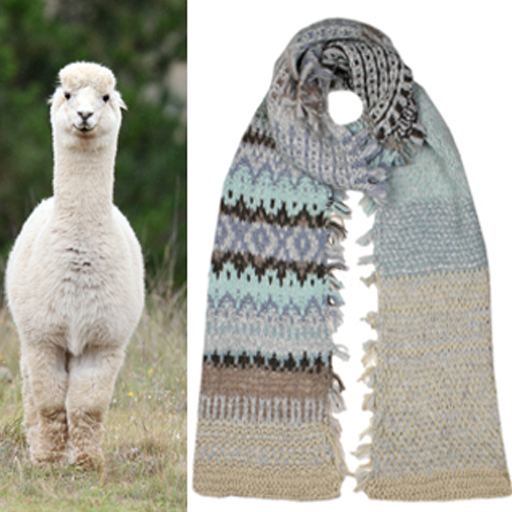
ALPACA FACTS
• A 100% natural product from an Alpaca
• A soft, durable and silky fibre
• Fibre is 18 - 25 microns
ALPACA BENEFITS
• Warmth
• Lightweight
• Strength and durability
• Soft and lofty yarn
ALPACA STORY
For thousands of years, alpacas were bred in South America specifically for their hair. Vicuñas, a wild animal that is part of the camel family, were first domesticated and bred into alpacas by the ancient tribes of the Andean highlands. There are two types of alpaca, each one produces a slightly different type of fibre. Alpaca fibre came to Europe in 1803 through Spain. Although, it was initially thought of as too difficult to turn into a textile, several ground-breaking manufacturers based in Bradford, England successfully knitted Alpaca into high-quality fabric.
Sheared annually, the process of spinning Alpaca hair is similar to sheep’s wool (shearing, preparing, carding, spinning, weaving and finishing). However, there are many differences between Alpaca fibre and Sheep wool fibre. Alpaca fibre is smoother and has a glossy shine due to the fibre’s smoother scale surface. It also has a higher tensile strength than wool, is warmer than wool and it is genuinely hypoallergenic as it contains no lanolin. Remarkably it does not retain water and is thermal even when wet. Depending on how Alpaca is spun, it can be either lightweight or heavy weight material. Good quality alpaca fibre is approximately 18 to 25 microns in diameter.
Alpaca has become increasingly more popular in recent years. People are rediscovering this soft, durable and silky fibre.
Image Source:
http://www.sporcle.com/games/lsl08/alpaca-or-llama

